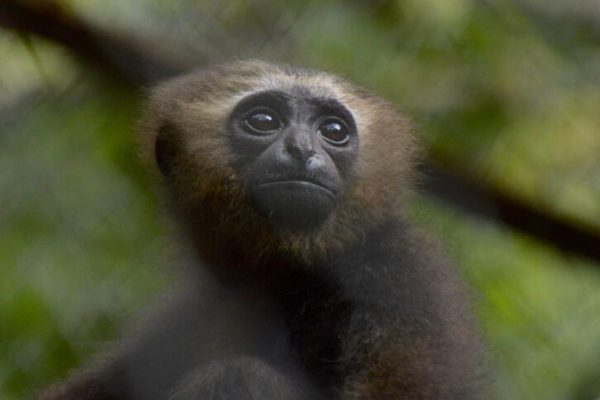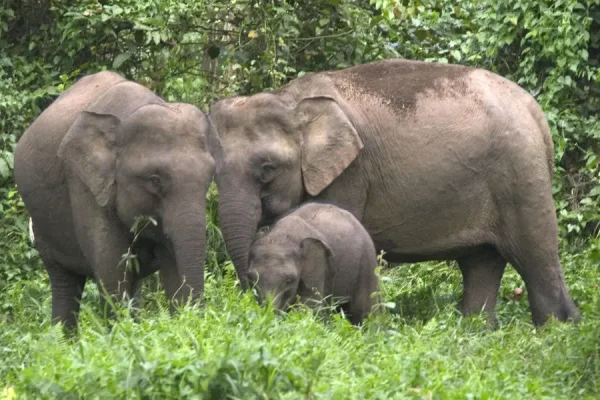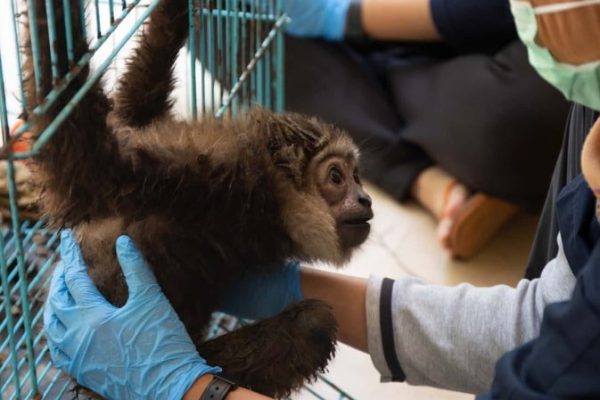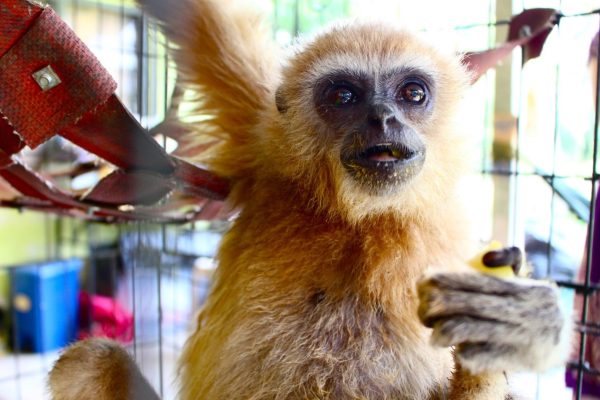LAR GIBBON

KEY FACTS Population Trend: Decreasing ↓
IUCN Status: Endangered
Wild population estimates: Unknown
Scientific name: Hylobates lar
Size: 45 – 50cms
Found in: Peninsular Malaysia
Habitat: Dipterocarp forest, submontane and lowland forest, mixed deciduous bamboo forest
Diet: Fruits, leaves, flowers, and insects
Average number of young: one (every 3.5 years)
Average Life-expectancy in the wild: up to 30 years
DESCRIPTION
The Lar gibbon, or the White-handed Gibbon, is one of the most well-known gibbon species in Malaysia. They get their name from the white-coloured hair that covers their hands and feet. Moreover, the adults have a ring of white hair around their hairless faces. Both males and females can have fur colouring varying from creamy to brown or black. Of all the gibbon species, the lar gibbon inhabits the greatest north-south range and is found in Laos, Myanmar, Thailand, Malaysia, and Indonesia.
The lar gibbon spends most of its life above the ground. Hence, it is equipped with super-long arms and hooked hands. This helps the gibbon to swing effortlessly and fluidly between branches in search of food, especially figs. Also, the lar gibbon loves vocalising. They communicate using songs, performed solo or as a couple. Moreover, these rich and reverberating duets are usually performed between sunrise and noon, with a peak at mid-morning. Also, their amazing song can be heard up to a kilometre through the rainforest. Currently, this gentle, vocal primate is listed as Endangered. There are multiple threats to its survival:Habitat loss and fragmentation—forest clearance for livestock grazing, agriculture, new settlements, monoculture plantations, roads, and illegal pet trade.
Additionally, click here to explore gibbon rescue and rehabilitation, and here to understand how illegal wildlife trade threatens the survival of many species, including gibbons.





